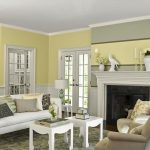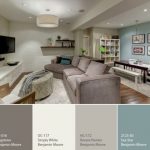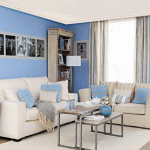Color psychology plays a crucial role in interior design, as different colors can evoke different emotions and create specific moods in a room. When it comes to your living room, it’s important to consider the colors you use carefully in order to create a harmonious and inviting space that promotes relaxation and well-being. Here are some tips on how to use color psychology to create a harmonious living room.
1. Start with a neutral base: When choosing a color scheme for your living room, it’s important to start with a neutral base color. Neutrals like white, beige, and grey provide a calming backdrop that allows other colors to stand out. They also create a sense of space and light in a room, making it feel more open and airy.
2. Add in accent colors: Once you have your neutral base, you can begin to add in accent colors to create interest and depth in the room. Consider using a color wheel to help guide your choices – complementary colors (colors that are opposite each other on the color wheel) can create a sense of balance and harmony, while analogous colors (colors that are next to each other on the color wheel) can create a cohesive and unified look.
3. Consider the psychology of color: Different colors can have different psychological effects on people. For example, cool colors like blues and greens are known to promote feelings of calm and relaxation, while warm colors like reds and yellows are energizing and inviting. Consider the mood you want to create in your living room and choose colors that reflect that feeling.
4. Use color in strategic ways: In addition to choosing the right colors for your walls and furniture, consider how you can incorporate color in other elements of your living room. Add pops of color with throw pillows, rugs, artwork, and accessories to create a cohesive and harmonious look.
5. Don’t be afraid to experiment: When it comes to using color in your living room, don’t be afraid to experiment and try out different color combinations. Play around with different shades and tones to see what works best in your space. Remember, you can always repaint a wall or swap out accent pieces if you’re not happy with the results.
In conclusion, color psychology can be a powerful tool in creating a harmonious and inviting living room. By carefully selecting colors that promote the mood you want to create, you can transform your space into a welcoming and relaxing retreat. Experiment with different color combinations and have fun incorporating color into your living room design.
 darbylanefurniture.com Interior design ideas with the latest interior inspiration
darbylanefurniture.com Interior design ideas with the latest interior inspiration




















